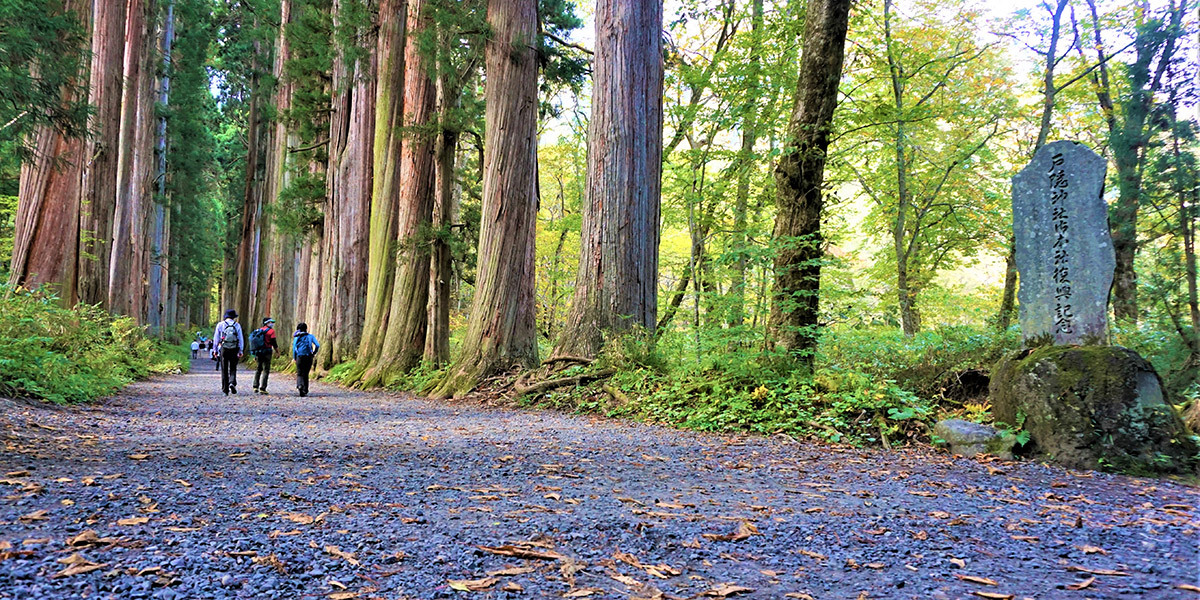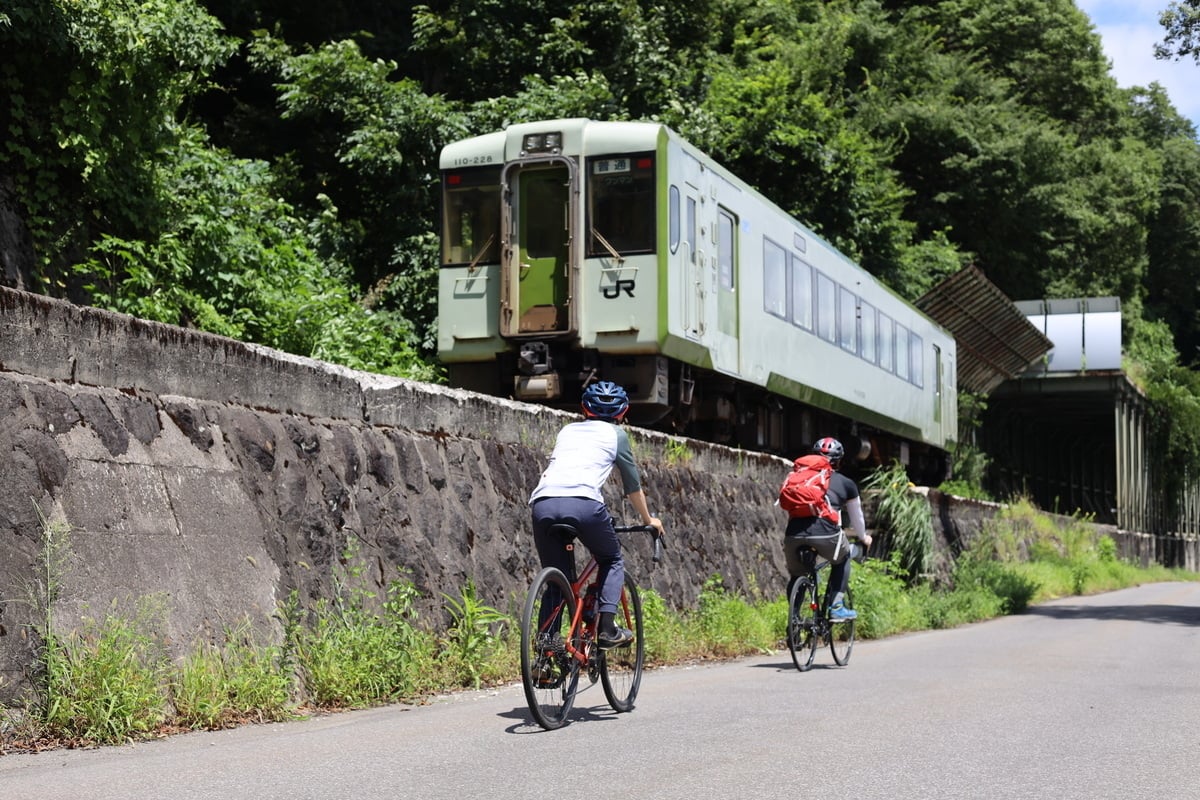Yamabushi Experience Tour at Kosuge Shrine
Learn about the ancient practices of Mountain Asceticism from a practicing yamabushi at Kosuge Shrine in Northern Nagano.

On a hillside above the rice paddy fields of Iiyama is a hamlet called Kosuge no Sato, whose unassuming smattering of red rooves hides an ancient shrine once visited by mountain ascetics from around Japan. Remnants of its history are scattered throughout the forest here, from small stone statues to the cobblestone steps that lead into the mountain.
In this quiet corner of the Japanese countryside, you can join a practicing mountain ascetic on a journey to Kosuge Shrine, exploring the area’s natural scenery and long history while learning more about this nearly forgotten practice of Shugendo.
Yamabushi Experience in Kosuge Shrine
What is Mountain Asceticism?
Mountains have been an object of worship in Japan since the earliest days of its Shinto faith. Whether awed by the destructive power of volcanos or blessed by pure water springs and the bounty of the mountains, people have long looked up to their lofty peaks with reverence.
Mountain asceticism, or Shugendo, combines elements of mountain worship with those of esoteric Buddhism and Taoism. Practitioners of mountain asceticism, known as Shugenja or Yamabushi, would travel into the mountains to undergo difficult training in their search for enlightenment.
The practice is said to have been pioneered by the monk En-no-Ozunu in the 7th century CE, although there is no definitive evidence of his existence.
The History of Mt. Kosuge
In Northern Nagano, the three mountains of Mt. Togakushi, Mt. Iizuna and Mt. Kosuge, known together as the Okushinano Sanzan, were haunts of mountain ascetics.
The Kosuge Shrine below Mt. Kosuge is said to have been established by En-no-Ozuno himself. As the story goes, En-no-Ozunu was drawn to the mountain’s spiritual energy and beauty, so he decided to climb it. Atop the mountain, he saw an incarnation of the horse-headed god, Bato Kannon. After building a shrine in a hillside cave and meditating there, he was greeted by the seven guardian deities of Kumano, Kinpu, Hakusan, Tateyama, Sanno, Izuyu and Togakushi. All eight deities are now enshrined in the cave.
The relatively hidden Mt. Kosuge prospered as a haunt for mountain ascetics, and in its prime over 300 monks resided here. But over the centuries, the village was decimated by numerous fires. Eventually, the practice of Shugendo was outlawed by the government in 1872 as part of their attempts to divest Buddhism from the native Shinto religion, and numbers of practicing ascetics dwindled further.
Mt. Kosuge and Kosuge Shrine remain as testaments to their past, and Shugendo practitioners continue to walk the path to the summit to this day.
The Yamabushi Experience Overview

Shida-san is a practicing mountain ascetic who frequently visits Kosuge Shrine as part of his training. In an effort to share the culture and knowledge of mountain asceticism and its practices with a wider audience, he began hosting tours to Kosuge Shrine, where participants can experience part of their meditative training and learn more about the area’s history.
Tour Details
Duration: 5 to 6 hours
Start/Ending Location: Kosuge Satomiya Shrine Lecture Hall
Inquiries and Reservations: Contact the Shinshu Iiyama Tourism Bureau
Access: From Iiyama Station, take the Nagaden Nozawa line bus to Sekisawa bus stop (25 min.), then walk to the Kosuge Satomiya Shrine (15 min.).
Participating in the Tour

The tour begins at the Kodo lecture hall of Kosuge Satomiya Shrine. Here, Shida-san and your interpreter guide, Lianne, are waiting to welcome you.
Inside, Shida-san instructs participants in some central concepts of mountain asceticism and teaches the chants that will be used during the excursion. He’ll assure you that it’s not important to recite these prayers perfectly, just voicing them aloud to the best of your ability is all that matters.
Then, everyone dons the white garments of the yamabushi, which resemble the clothing of the dead. This, he says, is because our journey into the mountains takes us temporarily from the living world to the afterlife.
Reciting Mountain Ascetic Prayers
 Blowing into his conch shell, Shida-san begins the ritual to start the tour. As he recites the prayers, participants do their best to follow along, gradually improving over each iteration. Before long, everyone is chanting in unison to the prayer’s unique rhythm. Occasionally, the prayer is interrupted by a series of bows or loud claps.
Blowing into his conch shell, Shida-san begins the ritual to start the tour. As he recites the prayers, participants do their best to follow along, gradually improving over each iteration. Before long, everyone is chanting in unison to the prayer’s unique rhythm. Occasionally, the prayer is interrupted by a series of bows or loud claps.
Once the prayer is complete, everyone shuffles out of the hall and picks up a walking stick to aid them in the pilgrimage to Kosuge Shrine. Then, in single file, the procession begins to walk through the village towards the forest above.
Climbing the Path to Kosuge Shrine
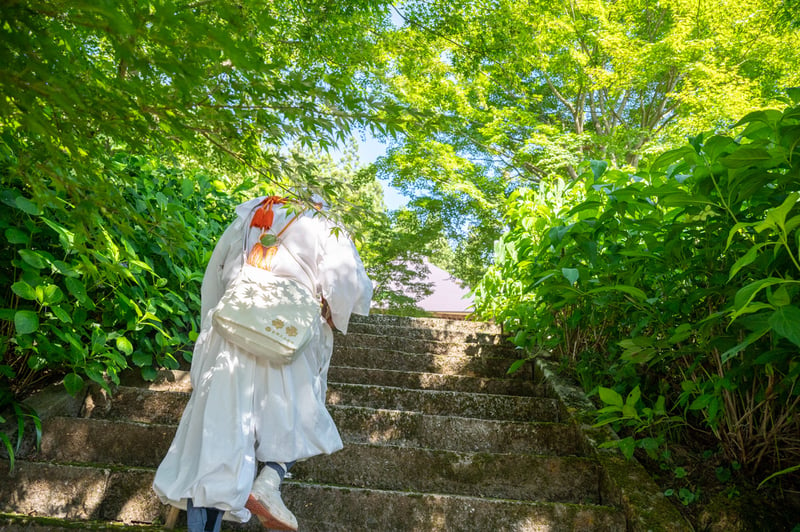
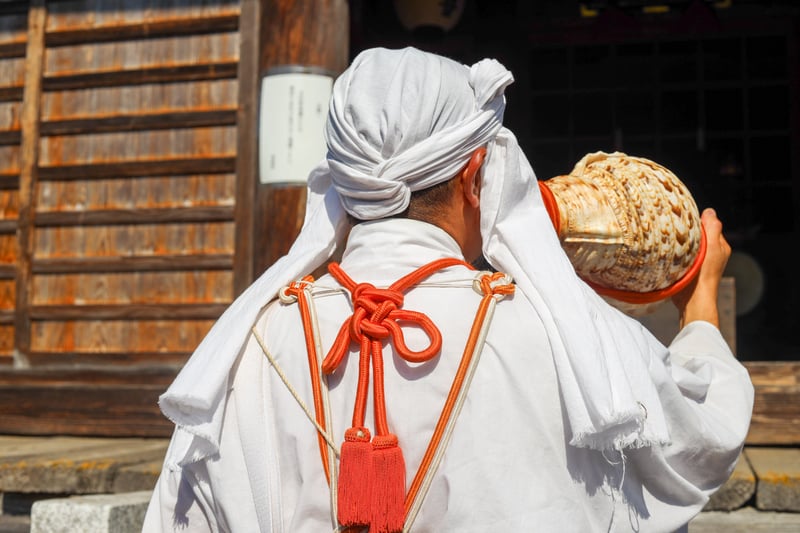
Shida-san blows the conch shell at the Bato Kannon shrine

Approaching the entrance to Kosuge Shrine
The journey from the lecture hall towards Kosuge Shrine is hushed. While participants are allowed to speak freely, Shida-san recommends that they refrain from talking during the excursion so they may focus on their own experience of the sights and sounds around them.
Arriving at a small shrine to the Bato Kannon deity, Shida-san begins another chant with the blow of the conch shell and the group recites the prayer in unison.
At the entrance to the forest is a bleached, wooden torii gate and a large stone monument. Beyond the gate, a path of large stones climbs upward, flanked by lanes of cedar trees on either side. Shida-san blows the conch shell again to announce our presence, and we pass the shrine gate and enter the forest.
Connecting with the Nature and History of Kosuge
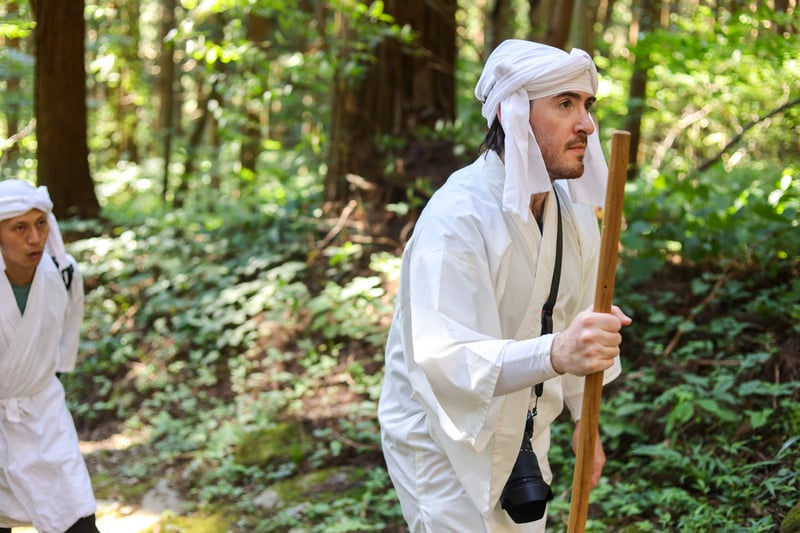
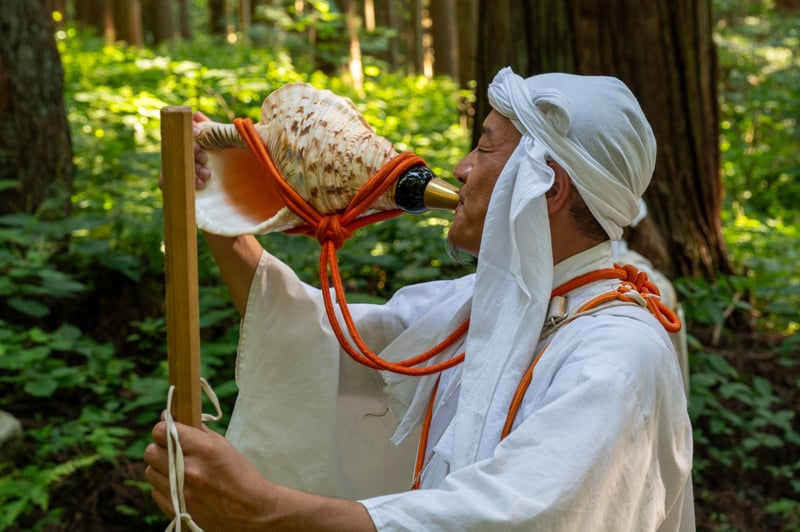
Shida-san's got a fever and the only thing that can cure it is more conch shell
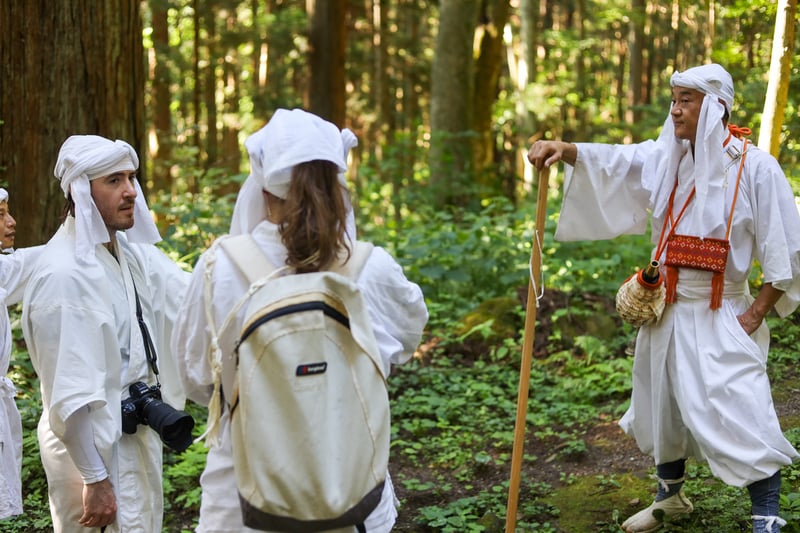
Lianne interprets Shida-san's story of Kosuge's first settlers
Small statues and wayward shrines dot the forest floor, and occasionally, Shida-san stops by these remnants of Kosuge’s history for a short talk. On this excursion, he talked about the earliest settlers of this area, the Jomon people, and how they thought and interacted with the world around them. How Jomon pottery was found in the spring near the top of the mountain and the significance that pure water must have played in their lives. It was a chance for us to reflect on our relationship with the world around us.
Considering the history of the area and walking up the countless cobblestone beside these towering cedar trees, the worries of everyday life seemed to melt away.
Kosuge Shrine
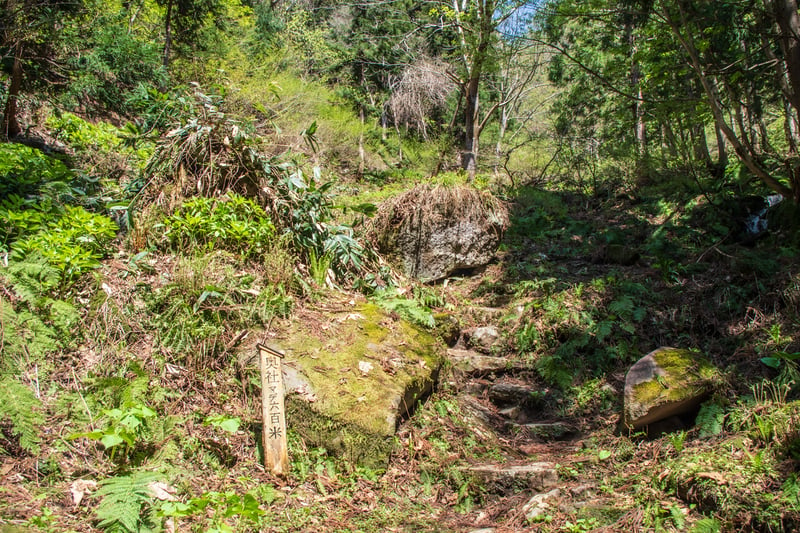
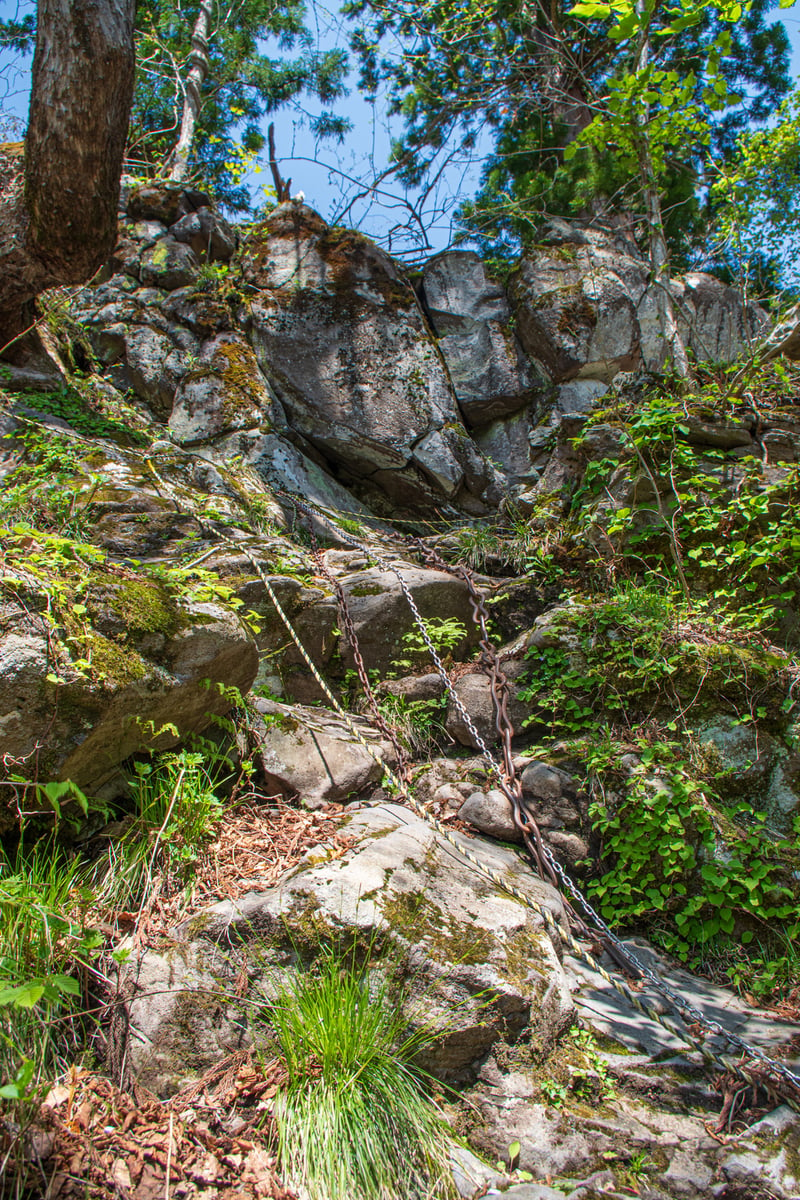
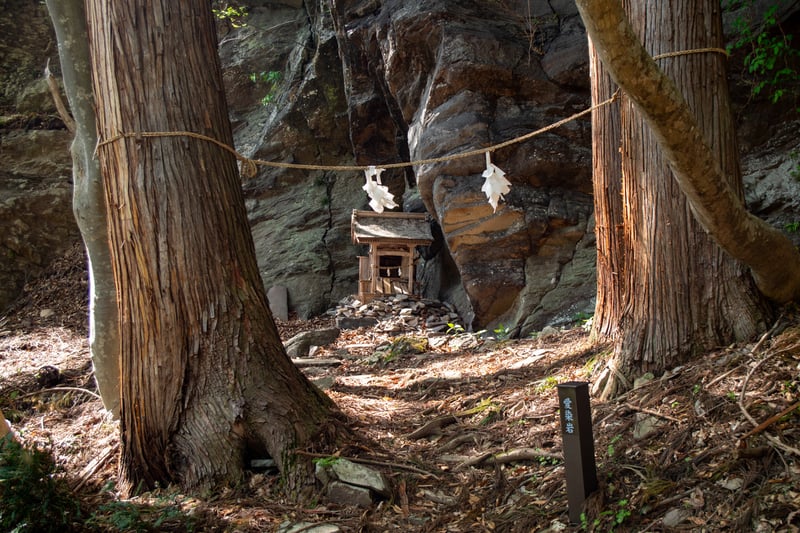
The trail suddenly grows steep as it approaches Kosuge Shrine, the large and gradual steps replaced by faces of rock and boulder. Metal chains are bolted to the side of the trail to assist climbers heading both up and down.
At the end of the trail, the main hall of Kosuge Shrine juts out from the hillside. Behind the hall is the cave where En-no-Ozuno originally meditated and was greeted by the Bato Kannon deity. From the spaces between the trees, it seems to peer out and over the rice paddies of Kijimadaira and the twisting and turning Chikuma River.
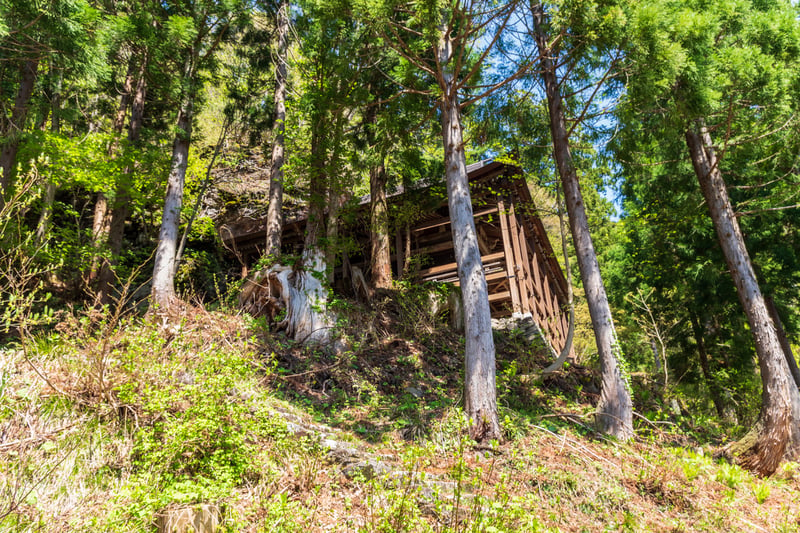
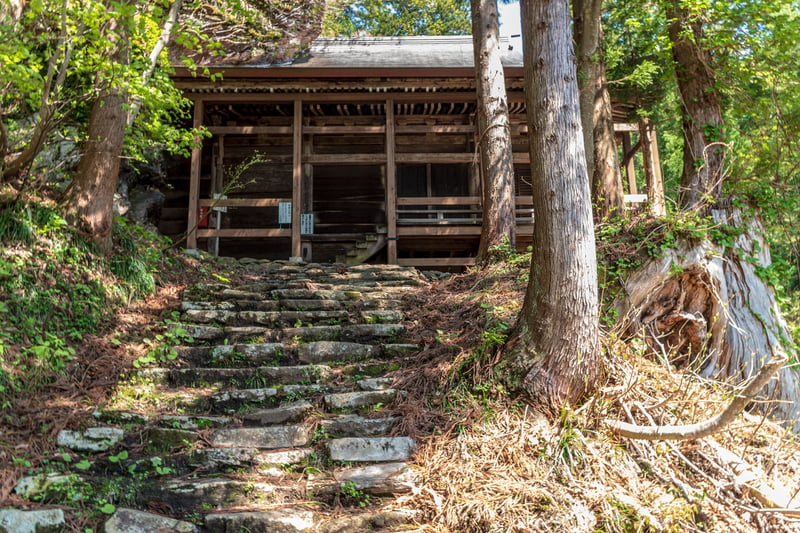
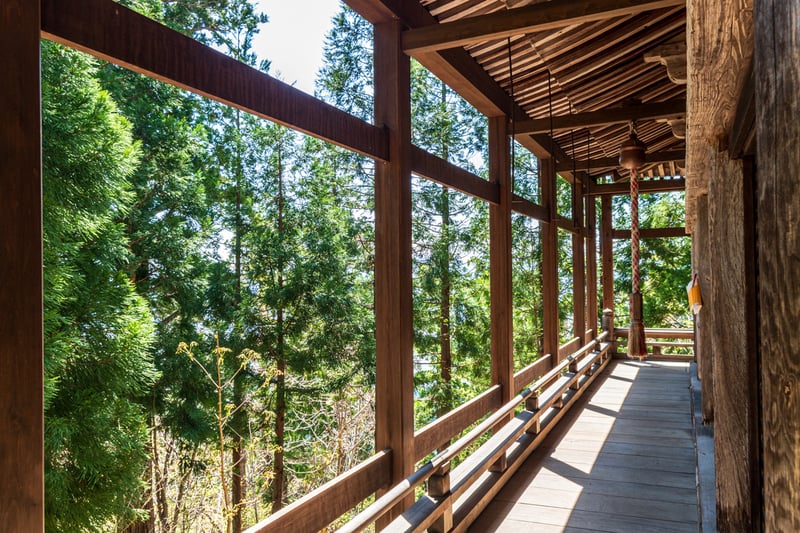
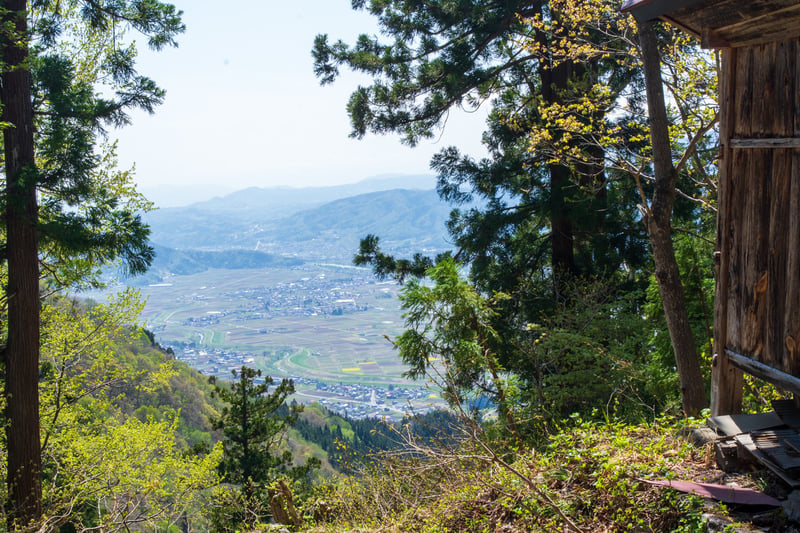
Returning to Kosuge no Sato
After some time for contemplation and photos at the top, the procession of yamabushi descends once again toward the world of the living. The return journey, aided by gravity, offers a new perspective of forests and moss-covered rocks around the trail.
Another hour of meditative walking later, the torii gate reappears before us. Everyone follows Shida-san’s lead as he hollers and runs through the gate. Why does he do this? Only those who participate in the tour may know.
Back at the lecture hall where the tour began, participants share their thoughts and experiences with one another as they take off their yamabushi attire and return to their everyday selves, hopefully with a new perspective found somewhere in the forests of Kosuge Shrine.
Inquiries and Reservations
Inquiries and reservations for the Yamabushi Experience Tour can be made through the Shinshu Iiyama Tourism Bureau.
Access to Kosuge no Sato
To access Kosuge no Sato for the Yamabushi Experience, take the Nagaden Nozawa line bus from Iiyama Station to Sekisawa bus stop (25 min.), then walk to the Kosuge Satomiya Shrine (15 min.).
You can also rent a bicycle from the Shin’etsu Shizenkyo Activity Center in Iiyama Station and cycle to the shrine in approximately 45 minutes.


